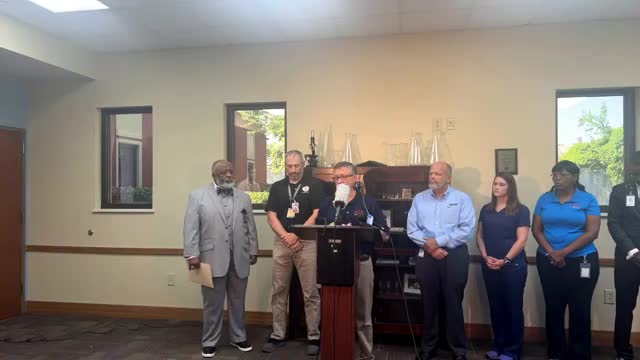Mosquito control efforts ramp up after historic flooding
This article was created by AI summarizing key points discussed. AI makes mistakes, so for full details and context, please refer to the video of the full meeting. Please report any errors so we can fix them. Report an error »

In a recent government meeting, officials addressed the significant rise in mosquito populations following recent flooding, emphasizing the urgent need for control measures. Terry Carlson, the director of mosquito control, reported a notable increase in nuisance mosquitoes, which do not typically transmit diseases, but warned that the situation could escalate as floodwaters recede.
Carlson outlined the response strategy, which includes aerial and ground treatments to manage mosquito populations. Helicopters are deployed in the evenings at sunset, while trucks operate in the mornings before sunrise to maximize effectiveness. He noted that the region is currently experiencing historic levels of mosquito activity, particularly along the Ogeechee River, and that monitoring will shift focus from nuisance mosquitoes to vector mosquitoes, which can transmit diseases like West Nile virus.
As the floodwaters begin to recede, Carlson highlighted the importance of community involvement in mosquito control. Residents are encouraged to eliminate standing water around their properties to prevent breeding grounds for mosquitoes. He also advised the use of EPA-registered insect repellents and protective clothing to mitigate exposure.
Lauren Baker Newton, the environmental health manager, echoed the need for public vigilance, particularly regarding septic systems that may be compromised due to flooding. She urged residents to reach out to the health department for assistance with property-specific concerns, including well water sampling and septic system assessments.
The meeting underscored the ongoing efforts to manage mosquito populations and protect public health in the wake of the flooding, with officials committed to continuing their response in the coming weeks.
Carlson outlined the response strategy, which includes aerial and ground treatments to manage mosquito populations. Helicopters are deployed in the evenings at sunset, while trucks operate in the mornings before sunrise to maximize effectiveness. He noted that the region is currently experiencing historic levels of mosquito activity, particularly along the Ogeechee River, and that monitoring will shift focus from nuisance mosquitoes to vector mosquitoes, which can transmit diseases like West Nile virus.
As the floodwaters begin to recede, Carlson highlighted the importance of community involvement in mosquito control. Residents are encouraged to eliminate standing water around their properties to prevent breeding grounds for mosquitoes. He also advised the use of EPA-registered insect repellents and protective clothing to mitigate exposure.
Lauren Baker Newton, the environmental health manager, echoed the need for public vigilance, particularly regarding septic systems that may be compromised due to flooding. She urged residents to reach out to the health department for assistance with property-specific concerns, including well water sampling and septic system assessments.
The meeting underscored the ongoing efforts to manage mosquito populations and protect public health in the wake of the flooding, with officials committed to continuing their response in the coming weeks.
View full meeting
This article is based on a recent meeting—watch the full video and explore the complete transcript for deeper insights into the discussion.
View full meeting